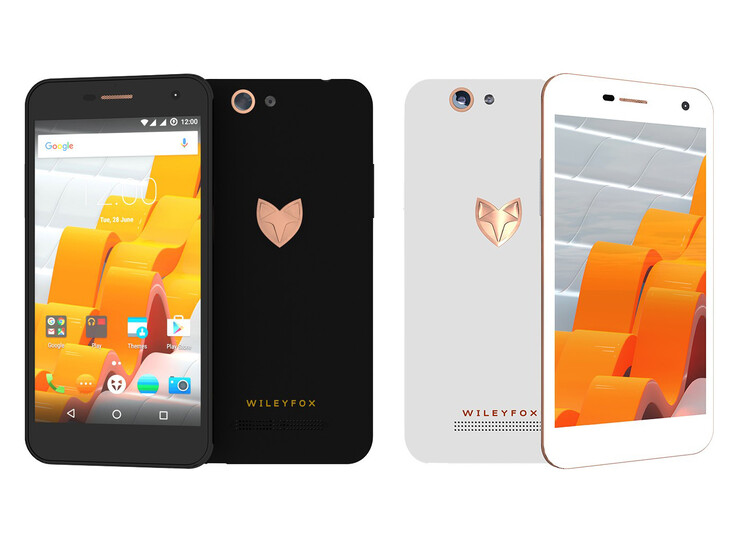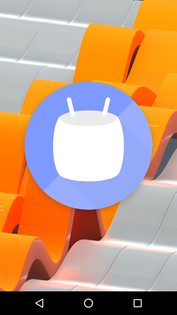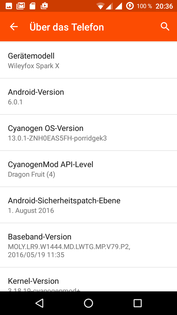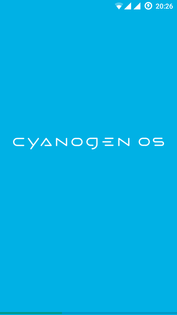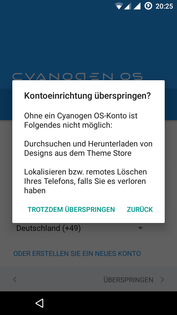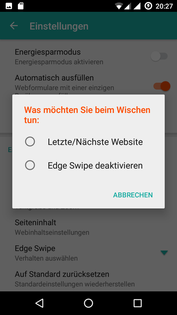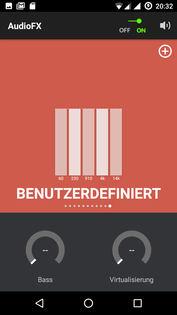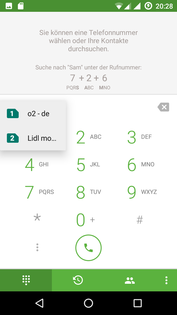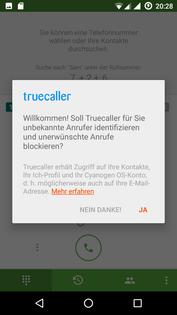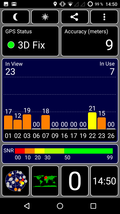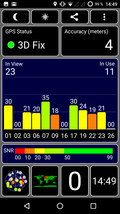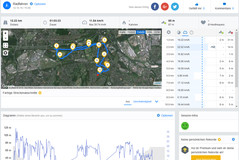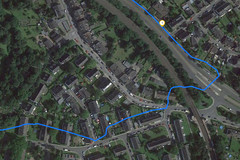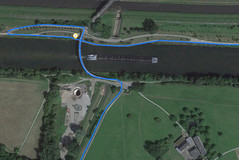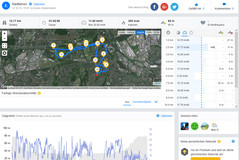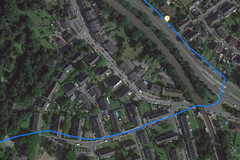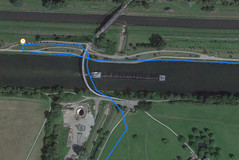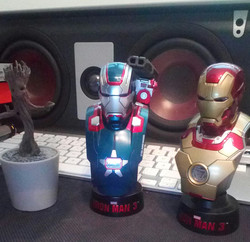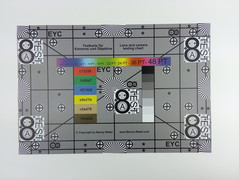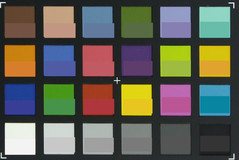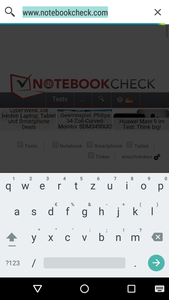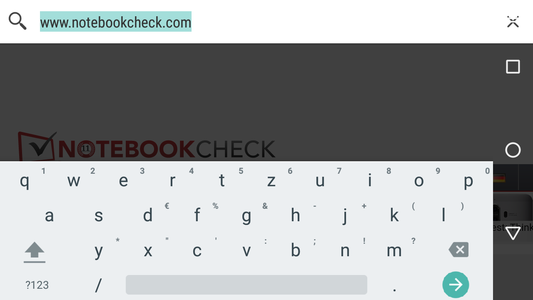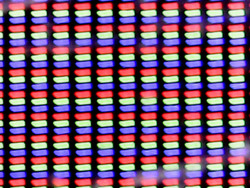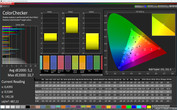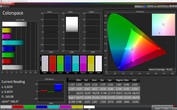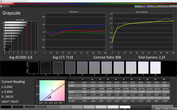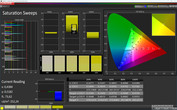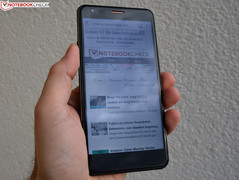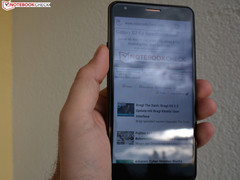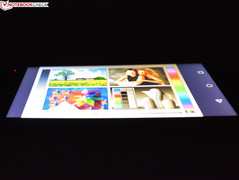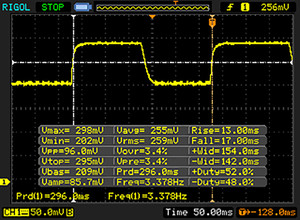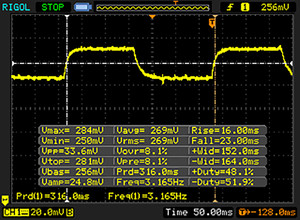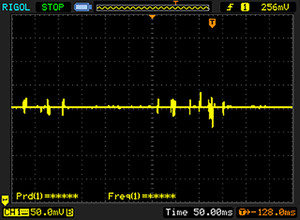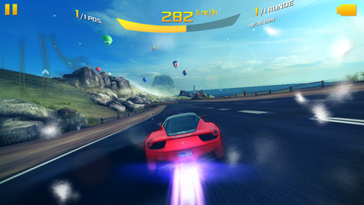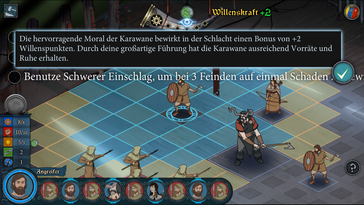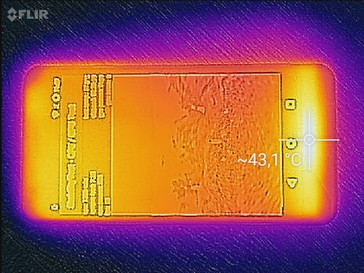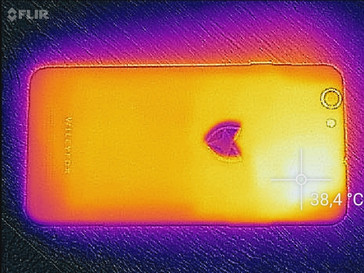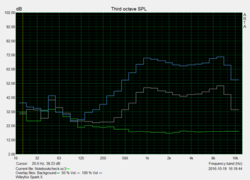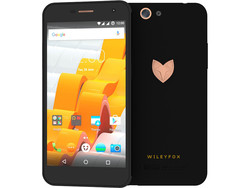Wileyfox Spark X Smartphone Review
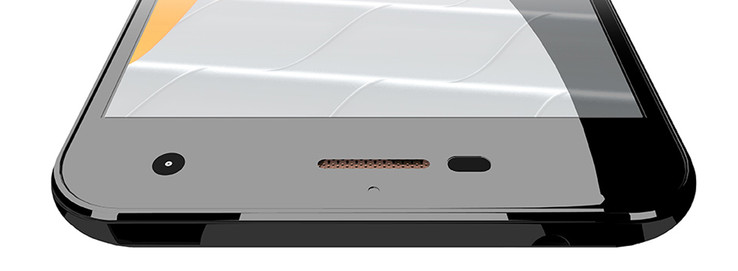
For the original German review, see here.
The British manufacturer, Wileyfox, is launching their fifth smartphone for the local market, the Spark X. This will expand their portfolio with a further phablet for a cheap price of around 180 Euros (~$190). The device offers an 11.4 Wh battery, sufficient storage space, LTE and dual-SIM functionality and a 5.5-inch frame.
The test model must compete with a lot of other devices in the below 200-Euros (~$211) category. For comparison, we will consider the LG X Power, the Acer Liquid Zest Plus, the Blackview R7 and the Lenovo Moto G4 Play.
Case
The Wileyfox Spark X is made of synthetic material and has a black, removable back. The model should also be available in white soon, but at the time of testing only the black version was provided. The cover has a slightly rough texture and is comfortable to hold. The design impresses with individual, small highlights. The case is quite slim at 8.75 mm. Sadly, the Android system keys are soft keys (virtual on-screen elements), instead of being hard keys (integrated into the case). This is especially annoying as the lower case edge is quite spacious. The device is lighter than most other models: 163 grams means our test model takes second place after the LG X Power (139 grams).
We like the clean workmanship and even gaps. The sturdiness of the device should be improved: the phone creaks slightly when we bend it, but the screen is prone to showing distortions as soon as pressure is applied.
The device offers a removable battery and slots for microSD and microSIM cards. Hot-swapping is not possible, as the slots are covered by the battery.
Connectivity
The internal memory measures 16 GB and, of this amount, 11 GB is free for use. The device has 2 GB RAM (typical for its class). The Blackview R7 can trump these numbers with 32 GB storage and 4 GB RAM. The internal memory can be expanded by using a microSD card (up to 32 GB supported). In fact, in our test, the device worked fine with a 64 GB card. Sadly, these memory cards are primarily for the storage of media, as apps are only sometimes movable to a SD card. A few benchmarks and even the Dropbox app refused to comply with the App2SD program. USB-OTG works without issues.
Software
The Spark X and all other Wileyfox smartphones have one thing in common: they all run Cyanogen as their OS. This is not pure Android 6.0.1 Marshmallow, but rather an offshoot thereof. CyanogenOS 13 bases on the open-source CyanogenMod. It offers basic apps, like email or browsers (not from Google). The system can be individualized more: the "Edge Swipe" gesture allows the user to change songs or adjust the brightness. Apps can be closed by holding the "Back" button (must be turned on in developer options - which, in turn, is activated by tapping the "Build Number" eight times). Considering the latest news, pure Android might have been the way to go.
Communication and GPS
The Wileyfox Spark X supports tri-band LTE Cat.4 at up to 150 MB/s (download) and max 50 MB/s (upload). Quad-band GSM and dual-band UMTS are also provided. During the test, the LTE reception was decent in the O2 network. The 802.11 b/g/n WLAN standards are supported and Bluetooth 4.1 is provided.
In our WLAN test, the Linksys EA8500 reference router is set a meter away from our device. Our test model does a great job, but the LG X Power is even faster. In our current test scenario, we send 10 streams simultaneously with a data block size of 4 MB.
| Networking | |
| iperf3 transmit AX12 | |
| LG X Power K220 | |
| Wileyfox Spark X | |
| iperf3 receive AX12 | |
| LG X Power K220 | |
| Wileyfox Spark X | |
The GPS module of the Wileyfox Spark X is rather slow. The satellite lock with the GPS test app was only possible next to the window (after the device had already been identified outdoors). It could take up to a minute to get a fix. The accuracy of the module was up to 9 meters to the house and 4 meters on the balcony.
In our test, we took the test model for a ride with the professional bike navigation device, the Garmin Edge 500: the recorded paths differ by a mere 600 meters for a 12-km route, but the differences are noticeable upon a closer look. The device records significant deviations, especially when crossing a bridge. However, this is acceptable performance for a personal phone.
Telephone and Speech Quality
The manufacturer has barely changed the telephone app. It offers the same functions as the standard Google app: a dialing pad, call logs, contacts and groups. Thanks to the dual-SIM functionality, the user can use up to two Micro SIMs simultaneously and switch between them at any time.
The speech quality of the Wileyfox Spark X is meager, as on our end, we hear distorted voices. Our call recipient enjoyed better fare as the audio quality for them was decent with a few background noises.
Cameras
The CMOS sensor of the main camera offers 13 MP and the Wileyfox Spark X is equipped with LED flash and auto-focus. The videos are recorded in Full HD at 30 frames per second. This is standard for this class of phones. The camera app takes a second to load and the live picture is also slightly delayed. We believe this to be due to the overburdened CPU. The pictures are decent, although at times, the camera needs a little long to capture them. We recommend manually adjusting the picture to achieve the best image. The lens is not ideal for snapshots as the color temperatures are too cool, resulting in a slight blue tinge. This is especially noticeable with low-light pictures, as dark content in pictures drops to VGA quality. The front camera uses max 8 MP and requires a properly lit subject to produce decent captures. With room lighting, the camera struggles to produce pictures without strong blurring, low details and pale colors. However, as this device is so cheap, a poor camera is acceptable.
For an exact analysis of the color accuracy of the camera, we used ColorChecker Passport. We check the quality of the main camera with pre-defined lighting conditions. In the central region, pictures have decent details. At the edges, the details drop off a cliff: words are no longer legible on colorful backgrounds and the picture appears washed-out. The colors are surprisingly accurate but lack saturation and seem washed-out.
Accessories and Warranty
The manufacturer provides the phone, the battery, a slim USB cable and a short manual. The Spark X delivery does not include a power adapter.
The warranty runs for 24 months and the battery is insured for 6 months.
Input Devices and Interface
The standard Android QWERTZ keyboard has the numbers set as secondary characters for the first row of letters. This saves space and allows the keys to be well-dimensioned. As expected, the keyboard can be customized extensively.
The sensitivity of the touchscreen is good, even into the corners. The sliding properties are also great. The automatic content rotation takes a second. The pressure points of the buttons are quite clear, but the volume rocker is a little rickety.
Display
With a resolution of 1280x720 pixels, the test model is typical for its class. The Blackview R7 can exceed expectations with an FHD resolution. Still, content is displayed clearly on the screen and the highlights of the display have to be the high brightness (average 542 cd/m²) and balanced illumination (96%). In this case, not even the Blackview R7 can outpace our test model. In the APL50 test, we measured a brightness of 552 cd/m² in the middle of the screen. With active ambient light sensor, the brightness was still around 550 cd/m². The deviations from the max value are negligible.
| |||||||||||||||||||||||||
Brightness Distribution: 96 %
Center on Battery: 554 cd/m²
Contrast: 815:1 (Black: 0.68 cd/m²)
ΔE ColorChecker Calman: 5.2 | ∀{0.5-29.43 Ø4.77}
ΔE Greyscale Calman: 6.8 | ∀{0.09-98 Ø5}
Gamma: 2.24
CCT: 7118 K
| Wileyfox Spark X IPS, 1280x720, 5.5" | LG X Power K220 IPS, 1280x720, 5.3" | Acer Liquid Zest Plus IPS, 1280x720, 5.5" | Lenovo Moto G4 Play IPS, 1280x720, 5" | Blackview R7 IPS, 1920x1080, 5.5" | |
|---|---|---|---|---|---|
| Screen | -2% | -9% | 1% | -39% | |
| Brightness middle (cd/m²) | 554 | 381 -31% | 414 -25% | 412 -26% | 552 0% |
| Brightness (cd/m²) | 542 | 352 -35% | 420 -23% | 414 -24% | 526 -3% |
| Brightness Distribution (%) | 96 | 85 -11% | 94 -2% | 94 -2% | 91 -5% |
| Black Level * (cd/m²) | 0.68 | 0.2 71% | 0.33 51% | 0.42 38% | 0.64 6% |
| Contrast (:1) | 815 | 1905 134% | 1255 54% | 981 20% | 863 6% |
| Colorchecker dE 2000 * | 5.2 | 7.3 -40% | 8.1 -56% | 5.6 -8% | 11 -112% |
| Colorchecker dE 2000 max. * | 10.7 | 21.2 -98% | 13.8 -29% | 9.7 9% | 20.8 -94% |
| Greyscale dE 2000 * | 6.8 | 7.4 -9% | 9.6 -41% | 6.9 -1% | 14.3 -110% |
| Gamma | 2.24 98% | 2.26 97% | 2 110% | 2.4 92% | 2.21 100% |
| CCT | 7118 91% | 8417 77% | 7754 84% | 8422 77% | 12996 50% |
* ... smaller is better
The black value of 0.68 cd/m² (APL50: 0.69 cd/m²) and contrast of 815:1 are below-average for an IPS panel. Subjectively, these are sufficient for the price class. Clouding is barely noticeable. It can be minimal with monochrome, black pictures.
The colors of the display can be improved: green is heavily toned and this is noticeable due to the slight color tint. The gray levels and gamma are decent, but they also produce a blue tint.
Outdoors use is possible with the Wileyfox Spark X due to the high brightness levels. Life is made difficult by the reflective screen, but thanks to the IPS technology at least the colors are stable, even at extreme viewing angles. In this case, only the brightness drops.
Display Response Times
| ↔ Response Time Black to White | ||
|---|---|---|
| 30 ms ... rise ↗ and fall ↘ combined | ↗ 13 ms rise | |
| ↘ 17 ms fall | ||
| The screen shows slow response rates in our tests and will be unsatisfactory for gamers. In comparison, all tested devices range from 0.1 (minimum) to 240 (maximum) ms. » 79 % of all devices are better. This means that the measured response time is worse than the average of all tested devices (20.2 ms). | ||
| ↔ Response Time 50% Grey to 80% Grey | ||
| 39 ms ... rise ↗ and fall ↘ combined | ↗ 16 ms rise | |
| ↘ 23 ms fall | ||
| The screen shows slow response rates in our tests and will be unsatisfactory for gamers. In comparison, all tested devices range from 0.165 (minimum) to 636 (maximum) ms. » 58 % of all devices are better. This means that the measured response time is worse than the average of all tested devices (31.6 ms). | ||
Screen Flickering / PWM (Pulse-Width Modulation)
| Screen flickering / PWM not detected | |||
In comparison: 53 % of all tested devices do not use PWM to dim the display. If PWM was detected, an average of 8086 (minimum: 5 - maximum: 343500) Hz was measured. | |||
Performance
The test model uses a 1.5 GHz MediaTek MT6735 64-bit SoC with an integrated Mali-T720 MP2 graphics chip. Both have 2 GB of RAM. Although this middle-class hardware can be found in many of the competitors, our test model is able to take the lead in some cases. However, in the PCMark benchmark, the test model places under the others. Only the Blackview R7 uses the stronger MediaTek Helio P10 MT6755 and can consistently place ahead in benchmarks.
In everyday use, the modest performance does not make much of a difference. The device works smoothly and reliably. Some apps need a second to start up.
| AnTuTu v6 - Total Score (sort by value) | |
| Wileyfox Spark X | |
| Blackview R7 | |
| Acer Liquid Zest Plus | |
| Lenovo Moto G4 Play | |
| LG X Power K220 | |
| Geekbench 3 | |
| 64 Bit Single-Core Score (sort by value) | |
| Wileyfox Spark X | |
| 64 Bit Multi-Core Score (sort by value) | |
| Wileyfox Spark X | |
| 3DMark | |
| 1280x720 offscreen Ice Storm Unlimited Score (sort by value) | |
| Wileyfox Spark X | |
| Blackview R7 | |
| Acer Liquid Zest Plus | |
| Lenovo Moto G4 Play | |
| LG X Power K220 | |
| 1280x720 offscreen Ice Storm Unlimited Graphics Score (sort by value) | |
| Wileyfox Spark X | |
| Blackview R7 | |
| Acer Liquid Zest Plus | |
| Lenovo Moto G4 Play | |
| LG X Power K220 | |
| 1280x720 offscreen Ice Storm Unlimited Physics (sort by value) | |
| Wileyfox Spark X | |
| Blackview R7 | |
| Acer Liquid Zest Plus | |
| Lenovo Moto G4 Play | |
| LG X Power K220 | |
| 2560x1440 Sling Shot OpenGL ES 3.0 (sort by value) | |
| Wileyfox Spark X | |
| Blackview R7 | |
| Acer Liquid Zest Plus | |
| Lenovo Moto G4 Play | |
| LG X Power K220 | |
| 2560x1440 Sling Shot OpenGL ES 3.0 Graphics (sort by value) | |
| Wileyfox Spark X | |
| Blackview R7 | |
| Acer Liquid Zest Plus | |
| Lenovo Moto G4 Play | |
| LG X Power K220 | |
| 2560x1440 Sling Shot OpenGL ES 3.0 Physics (sort by value) | |
| Wileyfox Spark X | |
| Blackview R7 | |
| Acer Liquid Zest Plus | |
| Lenovo Moto G4 Play | |
| LG X Power K220 | |
| GFXBench (DX / GLBenchmark) 2.7 | |
| T-Rex Onscreen (sort by value) | |
| Wileyfox Spark X | |
| Blackview R7 | |
| Acer Liquid Zest Plus | |
| Lenovo Moto G4 Play | |
| LG X Power K220 | |
| 1920x1080 T-Rex Offscreen (sort by value) | |
| Wileyfox Spark X | |
| Blackview R7 | |
| Acer Liquid Zest Plus | |
| Lenovo Moto G4 Play | |
| LG X Power K220 | |
| GFXBench 3.0 | |
| on screen Manhattan Onscreen OGL (sort by value) | |
| Wileyfox Spark X | |
| Blackview R7 | |
| Acer Liquid Zest Plus | |
| Lenovo Moto G4 Play | |
| LG X Power K220 | |
| 1920x1080 1080p Manhattan Offscreen (sort by value) | |
| Wileyfox Spark X | |
| Blackview R7 | |
| Acer Liquid Zest Plus | |
| Lenovo Moto G4 Play | |
| LG X Power K220 | |
| GFXBench 3.1 | |
| on screen Manhattan ES 3.1 Onscreen (sort by value) | |
| Wileyfox Spark X | |
| Blackview R7 | |
| Acer Liquid Zest Plus | |
| LG X Power K220 | |
| 1920x1080 Manhattan ES 3.1 Offscreen (sort by value) | |
| Wileyfox Spark X | |
| Blackview R7 | |
| Acer Liquid Zest Plus | |
| LG X Power K220 | |
| PCMark for Android - Work performance score (sort by value) | |
| Wileyfox Spark X | |
| Blackview R7 | |
| Acer Liquid Zest Plus | |
| Lenovo Moto G4 Play | |
| LG X Power K220 | |
The preinstalled browser is quite fast. Once again, the Wileyfox Spark X is only beaten by the faster Blackview R7. We still recommend the installation of the faster Chrome browser.
| Octane V2 - Total Score (sort by value) | |
| Wileyfox Spark X | |
| Blackview R7 | |
| Acer Liquid Zest Plus | |
| Lenovo Moto G4 Play | |
| LG X Power K220 | |
| Mozilla Kraken 1.1 - Total (sort by value) | |
| Wileyfox Spark X | |
| Blackview R7 | |
| Acer Liquid Zest Plus | |
| Lenovo Moto G4 Play | |
| LG X Power K220 | |
| JetStream 1.1 - Total Score (sort by value) | |
| Wileyfox Spark X | |
| Blackview R7 | |
| Acer Liquid Zest Plus | |
| Lenovo Moto G4 Play | |
| LG X Power K220 | |
* ... smaller is better
Our reference microSD memory card, the Toshiba Exceria Pro M401, works well with the test model, but the device cannot use the full potential of the card. The Lenovo Moto G4 Play manages to do a much better job than the Spark X. The internal eMMC memory of our test model is not as fast as those of others. However, while writing small blocks, the Wileyfox Spark X can score some points. In everyday use, the user should expect some waiting periods.
| Wileyfox Spark X | Blackview R7 | Acer Liquid Zest Plus | Lenovo Moto G4 Play | LG X Power K220 | |
|---|---|---|---|---|---|
| AndroBench 3-5 | 42% | -7% | 55% | -3% | |
| Sequential Read 256KB (MB/s) | 194.8 | 247.6 27% | 178.6 -8% | 144.1 -26% | 196.8 1% |
| Sequential Write 256KB (MB/s) | 37.91 | 122.7 224% | 39.51 4% | 43.95 16% | 43.74 15% |
| Random Read 4KB (MB/s) | 12.26 | 28.02 129% | 20.25 65% | 17.9 46% | 18.78 53% |
| Random Write 4KB (MB/s) | 15.57 | 11.4 -27% | 7.95 -49% | 28.31 82% | 7.32 -53% |
| Sequential Read 256KB SDCard (MB/s) | 39.5 | 15.56 -61% | 27.68 -30% | 65.5 66% | 32.08 -19% |
| Sequential Write 256KB SDCard (MB/s) | 20.59 | 11.87 -42% | 16.17 -21% | 51.1 148% | 18.17 -12% |
Games
Fans of mobile games can come to terms with the Wileyfox device if they like relatively hardware-light games or are happy setting the details to low. Asphalt 8: Airborne and the strategy game, Banner Saga 2, run fluidly but they suffer from the occasional stutter. The load times are quite long, especially for the latter. If you want a better gaming experience with higher details, we recommend choosing a smartphone with a stronger SoC.
Emissions
Temperature
The Wileyfox Spark X heats up negligibly while idle. We measure a max of 38.5 °C at the bottom of the front side. At load, the phone hits 40.5 °C, but on average it is decent at 37.3 °C. The back never gets uncomfortably warm, as it is a max 34.9 °C.
(±) The maximum temperature on the upper side is 40.5 °C / 105 F, compared to the average of 35.2 °C / 95 F, ranging from 21.9 to 247 °C for the class Smartphone.
(+) The bottom heats up to a maximum of 37.2 °C / 99 F, compared to the average of 34 °C / 93 F
(±) In idle usage, the average temperature for the upper side is 33.9 °C / 93 F, compared to the device average of 32.9 °C / 91 F.
Speakers
The mono speaker is on the lower back of the device, which means it will often be covered up. The sound is nothing great but acceptable for the price. The modest sound has little bass and poor middle notes. The equalizer dubbed "AudioFX" can not change much about it. At least the high notes are linear and the max volume does not distort the sound output too much. Music fans will want a pair of headphones or external speakers. These can be connected to the test model using the distortion-free 3.5 mm audio jack or the Bluetooth technology.
Wileyfox Spark X audio analysis
(±) | speaker loudness is average but good (78.7 dB)
Bass 100 - 315 Hz
(-) | nearly no bass - on average 32% lower than median
(±) | linearity of bass is average (7.7% delta to prev. frequency)
Mids 400 - 2000 Hz
(±) | reduced mids - on average 6.1% lower than median
(±) | linearity of mids is average (8% delta to prev. frequency)
Highs 2 - 16 kHz
(+) | balanced highs - only 1.9% away from median
(+) | highs are linear (2.7% delta to prev. frequency)
Overall 100 - 16.000 Hz
(±) | linearity of overall sound is average (25.7% difference to median)
Compared to same class
» 64% of all tested devices in this class were better, 7% similar, 30% worse
» The best had a delta of 11%, average was 35%, worst was 134%
Compared to all devices tested
» 78% of all tested devices were better, 5% similar, 17% worse
» The best had a delta of 4%, average was 24%, worst was 134%
Lenovo Moto G4 Play audio analysis
(-) | not very loud speakers (67.6 dB)
Bass 100 - 315 Hz
(-) | nearly no bass - on average 24% lower than median
(±) | linearity of bass is average (10.4% delta to prev. frequency)
Mids 400 - 2000 Hz
(±) | reduced mids - on average 5% lower than median
(±) | linearity of mids is average (7.6% delta to prev. frequency)
Highs 2 - 16 kHz
(+) | balanced highs - only 3.6% away from median
(+) | highs are linear (3.7% delta to prev. frequency)
Overall 100 - 16.000 Hz
(±) | linearity of overall sound is average (25% difference to median)
Compared to same class
» 61% of all tested devices in this class were better, 7% similar, 32% worse
» The best had a delta of 11%, average was 35%, worst was 134%
Compared to all devices tested
» 76% of all tested devices were better, 5% similar, 19% worse
» The best had a delta of 4%, average was 24%, worst was 134%
Blackview R7 audio analysis
(±) | speaker loudness is average but good (74.4 dB)
Bass 100 - 315 Hz
(-) | nearly no bass - on average 30.5% lower than median
(-) | bass is not linear (15.5% delta to prev. frequency)
Mids 400 - 2000 Hz
(±) | reduced mids - on average 9.8% lower than median
(-) | mids are not linear (15.2% delta to prev. frequency)
Highs 2 - 16 kHz
(±) | higher highs - on average 11.7% higher than median
(+) | highs are linear (6.2% delta to prev. frequency)
Overall 100 - 16.000 Hz
(-) | overall sound is not linear (44.4% difference to median)
Compared to same class
» 87% of all tested devices in this class were better, 0% similar, 13% worse
» The best had a delta of 11%, average was 35%, worst was 134%
Compared to all devices tested
» 95% of all tested devices were better, 0% similar, 4% worse
» The best had a delta of 4%, average was 24%, worst was 134%
Acer Liquid Zest Plus audio analysis
(+) | speakers can play relatively loud (84.3 dB)
Bass 100 - 315 Hz
(-) | nearly no bass - on average 39.9% lower than median
(±) | linearity of bass is average (8.6% delta to prev. frequency)
Mids 400 - 2000 Hz
(±) | reduced mids - on average 5% lower than median
(+) | mids are linear (6.5% delta to prev. frequency)
Highs 2 - 16 kHz
(+) | balanced highs - only 1% away from median
(+) | highs are linear (1.1% delta to prev. frequency)
Overall 100 - 16.000 Hz
(±) | linearity of overall sound is average (23.5% difference to median)
Compared to same class
» 53% of all tested devices in this class were better, 8% similar, 39% worse
» The best had a delta of 11%, average was 35%, worst was 134%
Compared to all devices tested
» 70% of all tested devices were better, 6% similar, 24% worse
» The best had a delta of 4%, average was 24%, worst was 134%
LG X Power K220 audio analysis
(+) | speakers can play relatively loud (88.5 dB)
Bass 100 - 315 Hz
(-) | nearly no bass - on average 41.7% lower than median
(±) | linearity of bass is average (8.7% delta to prev. frequency)
Mids 400 - 2000 Hz
(±) | reduced mids - on average 9% lower than median
(±) | linearity of mids is average (10.7% delta to prev. frequency)
Highs 2 - 16 kHz
(±) | higher highs - on average 5.4% higher than median
(+) | highs are linear (4.6% delta to prev. frequency)
Overall 100 - 16.000 Hz
(±) | linearity of overall sound is average (29% difference to median)
Compared to same class
» 76% of all tested devices in this class were better, 3% similar, 21% worse
» The best had a delta of 11%, average was 35%, worst was 134%
Compared to all devices tested
» 87% of all tested devices were better, 2% similar, 11% worse
» The best had a delta of 4%, average was 24%, worst was 134%
Frequency diagram for comparison (checkboxes above can be selected)
Energy Management
Power Consumption
The Wileyfox Spark X is conservative for its class. The Lenovo Moto G4 Play can do a little better and saves more power. The test model requires 0.53 to 1.86 W while idle and a max of 4.21 W at full load. We hope these values indicate a long battery life.
| Off / Standby | |
| Idle | |
| Load |
|
Key:
min: | |
| Wileyfox Spark X 3000 mAh | LG X Power K220 4100 mAh | Lenovo Moto G4 Play 2800 mAh | Blackview R7 3000 mAh | Acer Liquid Zest Plus 5000 mAh | |
|---|---|---|---|---|---|
| Power Consumption | 2% | 3% | -115% | -16% | |
| Idle Minimum * (Watt) | 0.53 | 0.64 -21% | 0.68 -28% | 1.83 -245% | 0.83 -57% |
| Idle Average * (Watt) | 1.76 | 1.3 26% | 1.58 10% | 3.21 -82% | 2.06 -17% |
| Idle Maximum * (Watt) | 1.86 | 1.34 28% | 1.61 13% | 3.45 -85% | 2.08 -12% |
| Load Average * (Watt) | 3.97 | 4.18 -5% | 3.36 15% | 5.67 -43% | 3.53 11% |
| Load Maximum * (Watt) | 4.21 | 4.87 -16% | 3.91 7% | 9.16 -118% | 4.49 -7% |
* ... smaller is better
Battery Life
The battery life is quite good, especially in comparison to the competition. There are exceptions like the Lenovo Moto G4 Play, which lasts longer despite having a smaller battery. The "compact 3,000 mAh battery offers more power on-the-go" according to Wileyfox. In fact, the Spark X does quite well in our WLAN test. The brightness is set to 25% (150 cd/m²) and we ran a script, which loads websites with HTML5 and JavaScript content. The device lasts 11:15 hours, which is great. FHD videos drain the battery after 13 hours - long flights should not be a problem. At full load and max brightness, the Wileyfox Spark X dies after 4:24 hours.
In everyday use, the runtimes should last two to three days. As the battery is removable, hardcore users can pack a second battery to keep going after the first one depletes.
| Wileyfox Spark X 3000 mAh | LG X Power K220 4100 mAh | Blackview R7 3000 mAh | Lenovo Moto G4 Play 2800 mAh | Acer Liquid Zest Plus 5000 mAh | |
|---|---|---|---|---|---|
| Battery runtime | 43% | -39% | 11% | 20% | |
| Reader / Idle (h) | 23 | 33.3 45% | |||
| H.264 (h) | 13 | 11.4 -12% | |||
| WiFi v1.3 (h) | 11.3 | 16.5 46% | 6.9 -39% | 10.5 -7% | 13.6 20% |
| Load (h) | 4.4 | 6.1 39% | 5.1 16% |
Pros
Cons
Verdict
Wileyfox writes about the Spark X: "Best display size and battery life make this phone your dream multimedia partner". Overall, the Spark X has clear strengths to offer: the long battery life, removable battery, good workmanship and decent material choice. The bright, crisp display is impressive and the cheap price is alluring.
The Wileyfox Spark X focuses on certain features: stylish design and long battery life for a cheap price below 180 Euros (~$190). Anyone who is looking for a cheap phone should take a look at the Wileyfox Spark X.
There is also a lot to criticize about a cheap phone: the modest performance, slow work tempo, meager speech quality, bleak photos (especially in poor lighting), lack of a power adapter, low resolution (only 720p) and sturdiness issues. If you can live with these criticisms, then perhaps this is the device for you. If not, the competition in this category is fierce and there are many options available.
Wileyfox Spark X
- 11/29/2016 v5.1 (old)
Michael Moser


